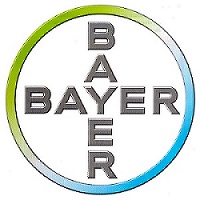
Bayer finds that the 'drip feed' process gets survey results to the right audience at the right time

In business, the best ideas are often the simple ones. But when your business has 7,000 employees who speak 10 languages and are spread over 100 countries, simplicity is apt to get lost in translation.
When healthcare company Bayer Diagnostics took over Chiron Diagnostics, it wanted to create a completely new corporate culture with an emphasis on customer service. The first step was a correlation study to help Bayer understand the specific links between employee behaviour and customer loyalty. This formed the basis of an annual survey, first distributed via paper.
“There were huge problems with logistics, ”says Tim Bray, vice-president of global and executive development at Bayer. Mailing out the survey and getting it back proved to be a Herculean task, with a response rate of just 52%.
Data analysis linked to business goals
In order to streamline the process, and improve the way the data was analysed, Bayer turned to Getfeedback. Bray's team worked closely with Getfeedback to develop a long-term vision to define how employee and customer measurement programs would be linked.
“Deciding what you want to measure is key,” says Alison Gill, CEO of Getfeedback. “The concept must be clear. With Bayer we focused on issues that would help the company improve relations with customers. ”
Once the questions were defined, the next challenge was to determine how the results would be reported back to Bayer. Getfeedback specialises in fast effective surveys for a global audience, allowing organisations to analyse trends as they happen. Making this information timely and accessible helps business leaders make more strategic decisions. Getfeedback put in place a system to 'drip feed' the right information to the right audiences at different times.
Overcoming logistical hurdles
Once the survey was finalised Getfeedback needed to translate it into nine different languages. However, given the effort that went into determining the wording in the English version, it was not a huge leap to realise that this would not be a straightforward translation project. The intent of the question, and the reasoning behind the wording choices had to be clearly explained to both the translator and the employees checking the translation.
With a global enterprise of this size, the survey also needed to be accessible to users working with different software versions and platforms. Employees without Internet access were accommodated with a spreadsheet delivered via email, designed in order that data could be collected without manual intervention.
Bayer committed to making the employee survey and feedback process an annual event, and that was key for Gill, who sees her company's role as one of providing a method for continuous improvement.“No matter how well designed, a survey will only be of value if managers are prepared and given the ability to act on the findings.”
The response rate has improved dramatically from the 52% level when Getfeedback first came on board. In the first year it climbed to 59%, then 72% and 76%. Getfeedback's approach is now viewed as best practice within the Bayer HealthCare Group.



